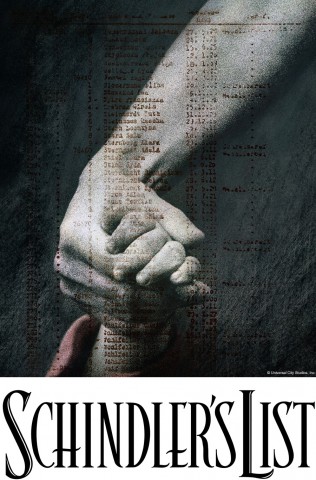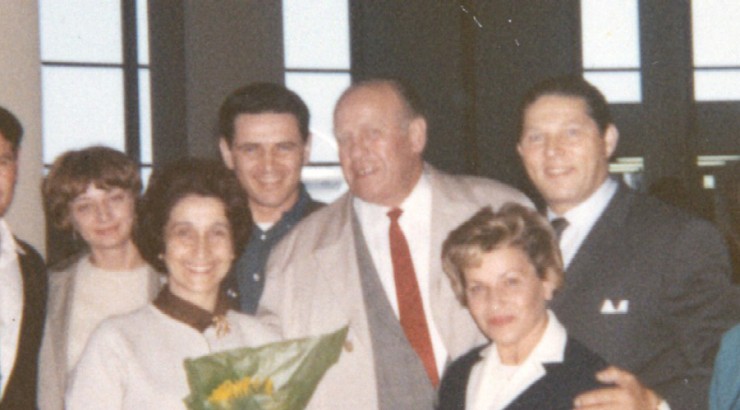“Schindler’s List” – Twenty Years Later
September 20, 2013
 A few days ago I viewed for the first time in several years Steven Spielberg’s acclaimed film Schindler’s List. In my experience, relatively few films remain meaningful and visually powerful so many years after one’s first viewing. That was certainly the case for me with Schindler’s List.
A few days ago I viewed for the first time in several years Steven Spielberg’s acclaimed film Schindler’s List. In my experience, relatively few films remain meaningful and visually powerful so many years after one’s first viewing. That was certainly the case for me with Schindler’s List.
The film was groundbreaking for many reasons. Steven Spielberg was already an immensely popular film maker at the time he made Schindler’s List. He was best known for blockbusters like Jaws; E.T., The Extra-Terrestrial; and Jurassic Park, films brimming with special effects. However, in Schindler’s List he took a radically different approach. To give the film a “documentary” look, Spielberg filmed in black and white with very rare–and riveting–moments of color. The film above all remained true to telling a story as Spielberg “imaged” the Holocaust through the life-saving efforts of Nazi industrialist Oskar Schindler. The story and dialogue were grounded in Thomas Keneally’s book Schindler’s List (first published as Schindler’s Ark). Keneally in turn drew heavily upon the testimony of those who owed their survival to Schindler, most especially the late Leopold Page and his wife Mila, who at 92 is the only founding member of The “1939” Club still living.
Twenty years later, I find myself looking at the film differently than I did the first time. The first time I was drawn by the magnitude of what I saw on the screen. This time, perhaps because of so recently working with Leon Leyson on his book, I thought about the story more in terms of individuals. I remember the fear that still lingered in Leon’s eyes when he spoke about never knowing if he might be the next person targeted by Amon Goeth, the commandant of Plaszow when he went on one of his sporadic shooting sprees. I remember the awe with which Leon spoke of Schindler as his mind went back in time to the boy he once was, standing on a box looking up at the man who never failed to treat him as a real person.
Perhaps it was thinking about the story in terms of individuals, both the survivors and those who were murdered, that made me more uncomfortable this time with the nudity portrayed in the selection and shower scenes. Perhaps now I am more aware than I was then of the problematic nature of such portrayals.
However, as I did years twenty years ago, I heaved a sigh of relief when the water poured out of the showers (far more water than would have actually been the case) rather than gas. Yet, this time I wondered if the image brought me closer to the experiences of those who were there or distanced me even further. I’m still debating that question with myself.
Certainly my thinking has been influenced by the writings of Elie Wiesel who eloquently reminds us that that the Holocaust is beyond any image, indeed beyond our imagination. As he writes: “One does not imagine the unimaginable. And in particular, one does not show it on screen.”
Yet, twenty years later, I still view with gratitude and admiration Steven Spielberg’s film. By daring to “image” the unimaginable, he drew millions of people around the world to learn about the Holocaust. In an act of extraordinary generosity, he utilized the profits from the film to establish the Shoah Foundation, now the USC Shoah Foundation Institute which has recorded the stories of more than 50,000 survivors, each bringing their individual perspective and lens to the history of the Holocaust. Many of these testimonies are now available to people around the world through the USC Shoah Foundation Institute Visual History Archive (http://sfi.usc.edu).
Twenty years ago–and still today–Steven Spielberg gives us the opportunity to enter into the history of the Holocaust through his powerful story telling. He shines a light not only on the dark history of those events but challenges us to direct that light to ourselves, to what our “imaging” of the Holocaust may say about us. The film has certainly led me not only to reflect anew on how I view the Holocaust but on how I “image” the world in which I live in now—how much and what I choose to see and how much and what I choose not to see.
On this twentieth anniversary of Schindler’s List, I hope you too will watch the film, whether you have seen it before or are viewing it for the first time.
Featured Image: Oskar Schindler at LAX with survivors from the “list,” including Mila Page (with flowers), Leon Leyson, (next to Schindler on the left ) and Paul Page (next to Schindler on the right ).
